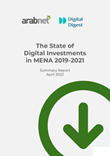
76% of worldwide banks will deploy AI interfaces as their primary point of interaction with customers within the three years to come, according to a survey conducted by Accenture. With AI in the picture, banks will not only revolutionize the customer relationship management, it will provide personalized recommendations of products based on their customer's habits and needs, and will also offer personalized financial advice and portfolio management that caters to their subject's financial plans. Banks will also be able to cut down on expenses related to basic customer service and back-office tasks, while optimizing their performance on both ends.
Chatbots
Also known as Smart Virtual Assistants (SVAs), Chatbots are artificially intelligent softwares that can maintain a conversation with a person; they're automated chat systems that do not require any human intervention. By identifying the context and emotions exuded by their subject during a chat, they respond with the relevant and appropriate answer. Some chatbots are voice activated and other are text activated.
By employing this smart tool, banks will redefine customer support. In fact, chatbots offer a wide array of benefits including 24/7 customer service, cost saving plans, penetration of millenials, and targeted content delivery.
Banks engage with their clients either via in-person conversations in a branch, or through telephone calls with sales or service representatives. Although this sort of interaction has proven to be extremely effective, it also presents itself to be costly. Chatbots can be very helpful on that level, as they maintain quick and high-quality customer service, while plummeting banks’ expenses.
In addition to the above, banks can better connect with the millenials by incorporating AI into their systems. As they are considered the largest users of mobile messaging services, such as Facebook Messenger, WhatsApp, and Snapchat, banks will have a wide open window of interaction with this generation and will expand its client-base and conversion opportunities.
Moreover, the use of AI promotes user-tailored content; further to aggregating data related to their subject's habits and needs, bank bots will be enabled to prompt notifications about new products that are available and also send more personalized messages.
On another note, banks leveraging voice enabled chatbots add an extra layer of biometric security for their customers. The bot will recognize its users' voice and therefore allows them to access to their account balance, set up account related alerts, pay bills, and report a lost card, among many other functions.
Robo-Advisers
Robo advisors are digital platforms that provide automated and algorithm-driven financial planning services, and require little to no human intervention. As any AI-focused system, robo-advisors collect information related to their clients’ financial situation and future goals, and then employs the aggregated data to offer advice and/or automatically invest client assets.
Today, robo advisors are capable of performing sophisticated tasks, such as tax-loss harvesting, investment selection, and retirement planning, all at lower costs and greater investment outcome. According to Investopedia, client assets managed by robo-advisors is projected to surge to $2TN, after having reached $60BN in 2015's Q4.
Other than being an easily accessible tool that is available 24/7, robo-advisors offer a great advantage - they are low-cost alternatives to traditional advisors. By eliminating costs related to human labor, they can offer high-quality service at a fraction of the cost. In fact, most of these online platforms charge an annual flat fee of 0.2% to 0.5% of the client's total account balance, that compares to a rate amounting to 1% to %2 charged by a human financial planner.
However, despite its proven efficiency, the robo-advisor is still nascent technology. Although it has automated some functions related to asset allocations, portfolio management, and more, 40% of bank users would not be comfortable using this tool alone in the times of extreme market volatility, as stated by Investopedia and the Financial Planning Assosiaction’s recent study.
Fraud Detection
By leveraging AI instruments, banks can identify and prevent fraud and security hacks in real time. If a customer is using a debit/credit card, the detection engine can score transactions within 0.3 seconds, to then flag fraud or approve genuine transactions without any interruption of the purchase process.
AI and ML technologies can crunch a massive number of transactions and flag any anomalies; they are able to learn from one instance, and therefore improve security. Some banks are also employing these technologies to payment providers, supporting security operations throughout the entirety of the payment ecosystem.
These technologies’ algorithms can identify patterns in the data to recognize fraudulent claims, and by learning from each case, they can automatically assess the severity of damages and predict the repair costs based on historical data, sensors, and images.
AI-driven tools can prevent false positives and provide a better detection in place, which enables fraud investigation teams free to perform tasks of higher value.
Back-Office Tasks
By allowing AI to the banks back-office operations, many labor-hours will scratched be off the employees' task-list. AI technologies can review loan agreements, identify repayment patterns, and bring Robotic Process Automation to populate data entry and increase processing speed, specifically in the case of structured data.
AI algorithms are set to be more precise given their exposure to great amounts of data. For instance, some banks are planning to include non-banking data in the loaning process, such as Amazon interactions, social media communications, and sensors in phones such as GPS and accelerometers, to therefore unearth new ways to determine the creditworthiness and provide the adequate financial help to their users.
Latest Business
Intelligence Report














